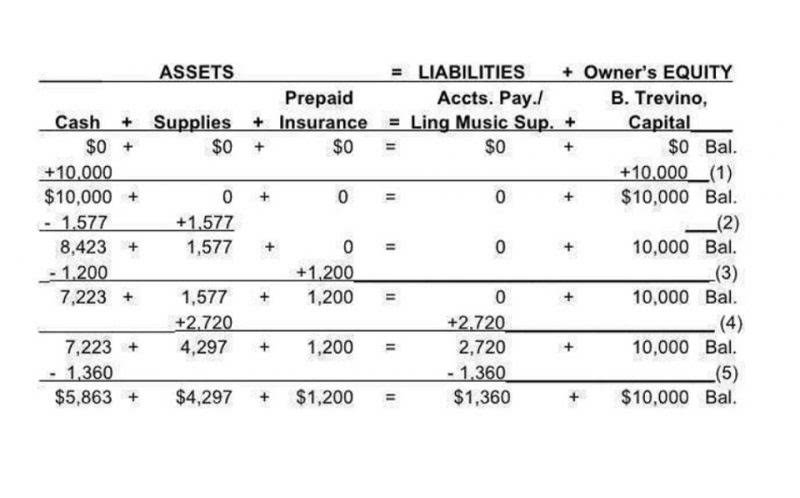Numbers like $X million in gross sales or $Y million in earnings are useful but don’t address a business’s profitability and comparative performance. Gross margin focuses solely on the relationship between revenue and COGS but net margin or net profit margin is a little different. A company’s net margin takes all a business’s expenses into account.
Gross Margin vs. Profit Margin
One way is to compare yourself against similar products or services in your industry. Ideally you should be on par with, or higher than, similar businesses. Net Sales is the equivalent to revenue or the total amount of money generated from sales for the period. It can also be referred to as net sales because it can include discounts and deductions from returned merchandise. Revenue is typically called the top line because it appears at the top of the income statement. Costs are subtracted from revenue to calculate net income or the bottom line.
How can you improve profit margins?
- There are a lot of administrative tools available online, including Profit Calc and BeProfit, which are designed to make accounting easier and more efficient.
- Profit margin can also be calculated on an after-tax basis, but before any debt payments are made.
- In ecommerce, the fundamental rule is that merchants must list products at a price higher than the cost of acquisition or production—this is the cornerstone of generating profit.
- Gross margin represents how much profit your company has after accounting for the cost of goods sold.
- Its goal is to increase production by an additional 50 per cent over the next 12 months.
- Generally, a 5% net margin is poor, 10% is okay, while 20% is considered a good margin.
This includes not only COGS and operational expenses, as referenced above, but also payments on debts, taxes, one-time expenses or payments, and any income from investments or secondary operations. The NYU Stern School of Business website features a useful reportcontaining average net margin and gross margin figures by US industry sector. The report shows that gross and net margins vary greatly by sector, with industries such as banking,financial services, software and drugs currently having the highest gross margin. Sectors such as banking, transportation and financial services currently have the highest netmargin. Let’s say that your company brings in $50,000 in sales revenue and your costs of goods sold is $30,000.
Huang says the change to the Blackwell GPU mask is complete.
However, the bank still anticipates that Nvidia will outpace Wall Street forecasts by around $1 billion. «While on the margin some may be paring back orders ahead of the launch of Blackwell, we still expect aggregate demand trends to remain healthy,» he wrote. Nvidia’s earnings will mirror past quarter to deliver another estimate-beating report as AI computing demand remains intact, Deutsche Bank analyst Ross Seymore wrote.
Example of operation profit margin calculation
- The most common and widely used type of profit margin is net profit margin, which accounts for all of a company’s costs, both direct and indirect.
- It sheds light on how much money a company earns after factoring in production and sales costs.
- The Total Gross Profit is the total profit that is made after all your units have been sold.
- Finally, your margin is a better measure of profitability than markup.
- While this is a fairly straightforward example, profit margin values and their complexity can vary depending on the company.
- To calculate ABC Ecommerce’s gross profit, you’ll need to know revenue and COGS.
Smaller businesses, like a local retail store, may need to provide it to get (or restructure) a loan from banks or other lenders. The information included is designed for informational purposes only. It is https://www.bookstime.com/compare-bookkeeping-solutions not legal, tax, financial or any other sort of advice, nor is it a substitute for such advice. We have tried to make sure the information is accurate, but it could be outdated or even inaccurate in parts.
While this figure still excludes debts, taxes, and other nonoperational expenses, it does include the amortization and depreciation of assets. Gross margin is commonly used to measure the overall profitibility of a business. By comparison, sales margin is used to measurethe profitability of an individual product line or service. Luckily, with a solid understanding of how to calculate margins and some thoughtful strategizing, you can make sure your ecommerce business has healthy profit margins and is on track for long-term success. Below you’ll find some of the most commonly asked questions ecommerce businesses ask us about their profit margins. Finally, your margin is a better measure of profitability than markup.
Logistics Calculators
They’re commonly used interchangeably but these two figures are different. Gross margin helps a company assess the profitability of its manufacturing activities. Net profit margin helps the company assess its overall profitability. Companies and investors can determine whether the operating costs and overhead are in check and whether enough profit is generated from sales. Restaurants in the franchise are run by Company E. Its operating, net, and gross profit margins are 25%, 10%, and 60%, respectively.





